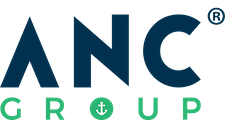Financial Statement
Generally, as a business owner, you need to:
- Increase your total assets. Assets are segregated into 2 types:
- Non-current assets – referring to your long term property, plant and equipment .
- Current assets – referring to your trade debtors, inventories and cash and cash equivalents, which has shorter life span or higher turnover.
- Decrease your liabilities. Similar to assets, liabilities are also segregated into 2 parts.
- Long-term liability – which refer to your loans.
- Short term liabilities – which are your payables, or suppliers’ owing.
- Distribute dividend from your retained earnings. Any profit after tax that you make, ultimately will flow to a retained earning account in balance sheet. It is a sum of undistributed profits over the entire existence of a company. This undistributed profit can be distributed to company shareholders in the form of dividend payments. In Malaysian context, such dividend distribution also known as single tier dividend and the best part is, it is not taxable in the hands of shareholders.
Cash Flow Statement
Cash flow statement is one of the most important report that a business must observe time to time. Cash flow statement is a report of a company’s cash inflows and outflows over an accounting period.
Difference between Income Statement and Cash Flow Statement
Firstly, there are timing difference between an income or expense item is recorded and when the cash actually comes in or goes out. For example, I sold my product in January but my customer only pays in me July. In the income statement, it will be recorded in January, but cash flow statement will only record the inflow in July.
Secondly, the cash flow statement include several types of transactions that are not included in the income statement.
For example, ANC takes out a loan with its bank. The loan will not appear on the income statement, as the transaction is neither a revenue item nor an expense item. It is simply a balance sheet item which increases my cash and increases my liability. This inflow will be recorded in cash flow statement. In another words, the components that made up cash flow statement consists of both income statement and balance sheet items.
3 Types of Cash Flow Consisted in Cash Flow Statement
- Cash flow from operating activities
- Cash flow from investing activities; and
- Cash flow from financing activities.
Cash Flow from Operating Activities
Cash flow from operating activities includes any cash flows not specifically defined as investing or financing activities. The simple way of explain is the transactions that will determine my business’s net profit income in income statement.
Common transactions that are categorized as cash flow from operating activities include:-
- Receipts from the sale of goods and services
- Payment made to suppliers
- Payment made to employees
- Interest payments made to lenders
- Interest or dividends received from investments and
- Tax payments
Cash Flow From Investing Activities
Cash flow from investing activities includes cash spent on or received form the sale of investment in financial securities such as stocks and bonds. It also includes the sale of property, plant and equipment.
Cash Flow from Financing Activities
Cash flow from financing activities includes cash inflows and outflows relating to transactions with the company’s owners and creditors. The transactions include:
- Cash received form investors when shares are issued
- Dividends paid to shareholders
- Cash received from taking out a loan; and
- Cash paid to pay back the principal on a loan. Not interest as interest would be classified as operating activities instead.
Again, it is very important understand the business conditions by using accounting. If you need assistance, please call us at 011-1217 8183.




